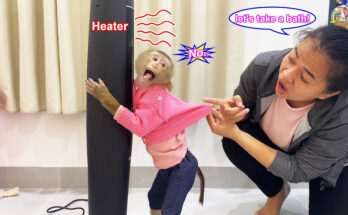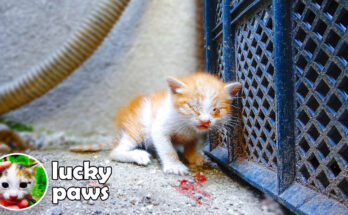It started with a soft lump on the side of her head—barely noticeable at first. The cat, a sweet and affectionate stray we’d been feeding for weeks, didn’t show much discomfort. But as the days passed, the lump grew larger, and a small hole appeared at its center. That’s when we knew something was seriously wrong. After a closer look, we suspected it was a Cuterebra—a botfly larva—embedded deep beneath her skin.
With great care, we gently placed her in a carrier and brought her into a quiet room. She trusted us, and that trust meant everything. We gathered warm towels, gloves, antiseptic, and a pair of sterile tweezers. The hole had widened slightly, and from it, we could see the unmistakable signs of movement beneath her skin. It was heartbreaking.
After cleaning the area thoroughly, we began the delicate process. The key to removing a Cuterebra is patience—applying gentle pressure around the opening to encourage the larva to surface, without crushing it. Damaging the parasite inside the body can cause a serious infection.
Slowly, and with careful hands, we worked around the opening. The larva resisted, wriggling deeper at times, but eventually, its body began to emerge. Inch by inch, the massive botfly larva came into view—larger than we had expected. With a firm but steady pull, we removed it entirely. Relief washed over us. The cat let out a soft meow, as if thanking us.
We cleaned the wound again, applied antibiotic ointment, and kept her indoors for observation. Over the next few days, her appetite returned, and she seemed more comfortable. The wound began to close, and her gentle purrs filled the room.
It was a shocking and intense experience, but one that reminded us of the quiet suffering so many stray animals endure. Today, she’s Cuterebra-free—and well on her way to healing.



